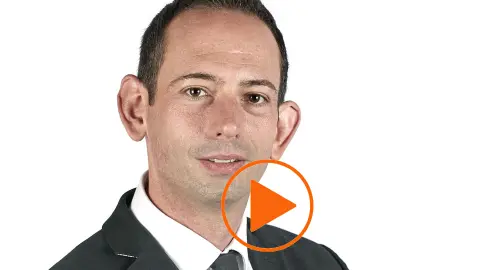US: Fed could yet be called into action
Unsurprisingly, given ongoing vote counting, the Fed chose not to rock the boat and has left monetary policy and its communications unchanged. They stand ready to offer more support and could yet be called into action if any renewed Covid-19 containment measures weigh more heavily on the economic outlook
Federal Reserve plays it safe
The Federal Reserve voted 10-0 in favour of leaving the Fed funds target rate at 0-0.25% and will maintain bond-buying “at least at the current pace”.
There were barely any changes in the text of the accompanying statement with officials reiterating that in their view ”the ongoing public health crisis will continue to weigh on economic activity, employment, and inflation in the near term, and poses considerable risks to the economic outlook over the medium term”.
Their forward guidance is also unchanged with the current level of interest rates expected to be maintained “until labor market conditions have reached levels consistent with the committee's assessments of maximum employment and inflation has risen to 2 percent and is on track to moderately exceed 2 percent for some time.”
Remember that their September dot diagram of individual FOMC member predictions has rates on hold through to the end of 2023.
The case for more fiscal stimulus persists
None of this comes as a surprise. The Fed would have been reluctant to be drawn into what is already a fraught political backdrop as the vote count continues and threats of prolonged legal wrangling linger.
Fed Chair Jerome Powell was reluctant to offer much on what the election means for the economy and in turn central bank policy
This caution continued into the press conference with Fed Chair Jerome Powell reluctant to offer much on what the election means for the economy and in turn central bank policy. Nonetheless, he continues to make the argument that more fiscal policy support “may be needed” since the pace of improvement in the economy has “moderated”. Moreover, not everyone has benefited to the same extent from the upturn so far and the pandemic presents ongoing headwinds for growth.
This ties in with Jerome Powell's repeated assertion that monetary policy cannot generate demand. If you want that, it has to be through government spending - although he was at pains to point out that it isn't for the Fed to give direct advice to Congress on the size or timing of additional fiscal stimulus. These comments have seen the dollar come under pressure again - similar to previous press conferences at which he has argued for more stimulus - since it helps the reflation trade case.
This in turn supports currencies more tied to the economic cycle such as NOK, AUD and to a lesser extent, EUR.
The election, Covid-19 and future Fed policy
The election result is not as clear cut as opinion polls suggested it would be, but we still anticipate that there will be a fiscal package in excess of $1trn next year (equivalent to around 5% of GDP). This stimulus, when combined with a long-anticipated Covid-19 vaccine, can really lift the economy and drive growth. We consequently remain very upbeat on the prospects for 2021 and 2022.
We anticipate that there will be a fiscal package in excess of $1trn next year and consequently remain very upbeat on the prospects for 2021 and 2022
However, we are becoming more concerned about the near-term story with unemployment benefit income being tapered sharply for millions of households at a time when Covid-19 cases are rising rapidly. We have to acknowledge the possibility for the return of pandemic containment measures here in the US, similar to what Europe is currently experiencing, in an effort to limit the potential strains on the healthcare sector. The downside is that it will restrict activity and could prompt a period of economic contraction.
Legal challenges surrounding the election could increase the degree of political animosity and that may hamper the ability or the desire for politicians to sit around a table and agree to a package of measures that could support the economy until a vaccine can be rolled out. At the very least it may mean action doesn’t come as swiftly as the CARES Act did earlier in the year and this could make the Federal Reserve feel compelled to step up. This could involve asset purchases and/or liquidity injections to calm nerves and smooth market functioning if we are correct and the economy does enter a more troubled period.
This publication has been prepared by ING solely for information purposes irrespective of a particular user's means, financial situation or investment objectives. The information does not constitute investment recommendation, and nor is it investment, legal or tax advice or an offer or solicitation to purchase or sell any financial instrument. Read more
Tags
Federal ReserveDownload
Download article
5 November 2020
Making waves: Covid-19 and the US presidential election This bundle contains 12 Articles